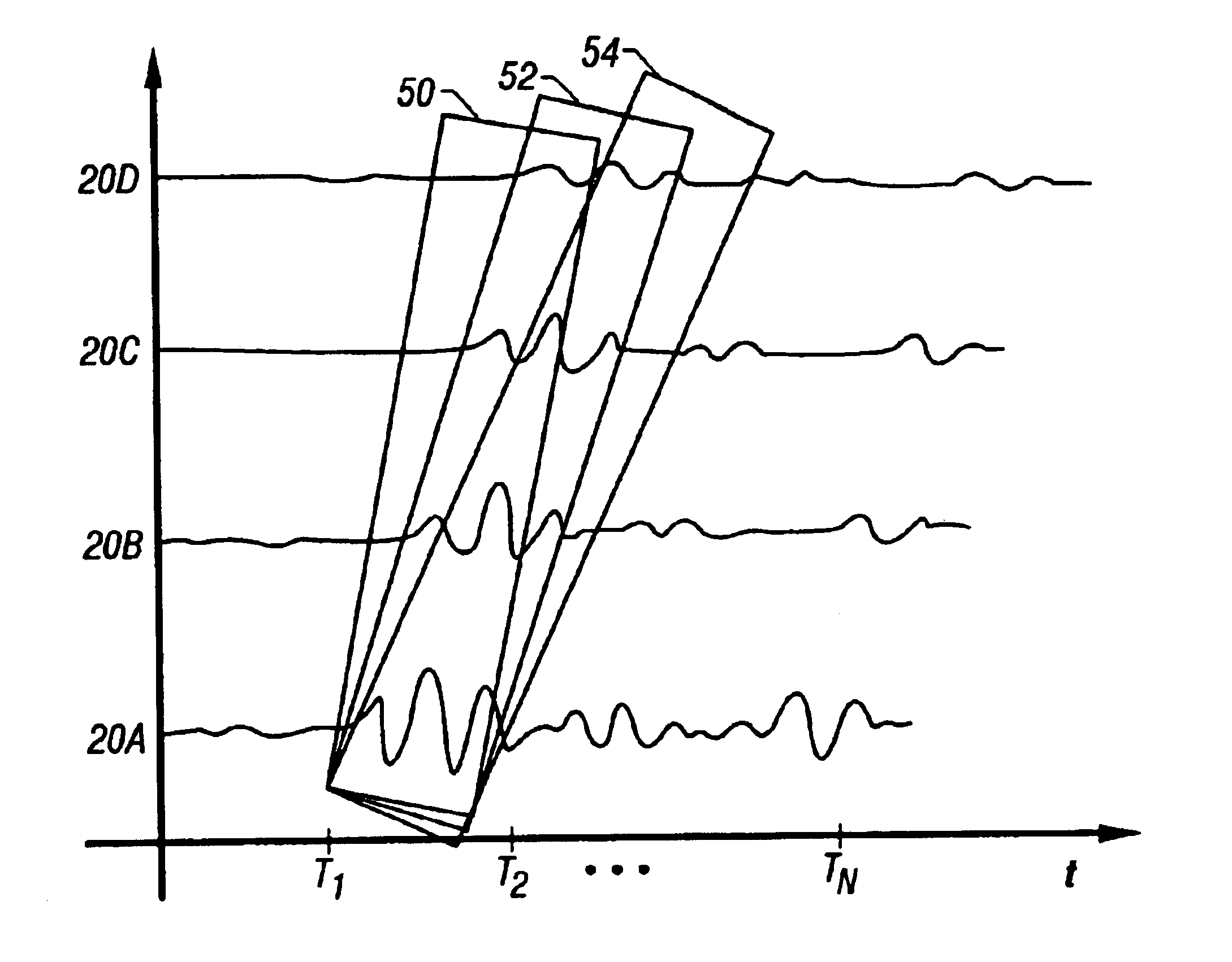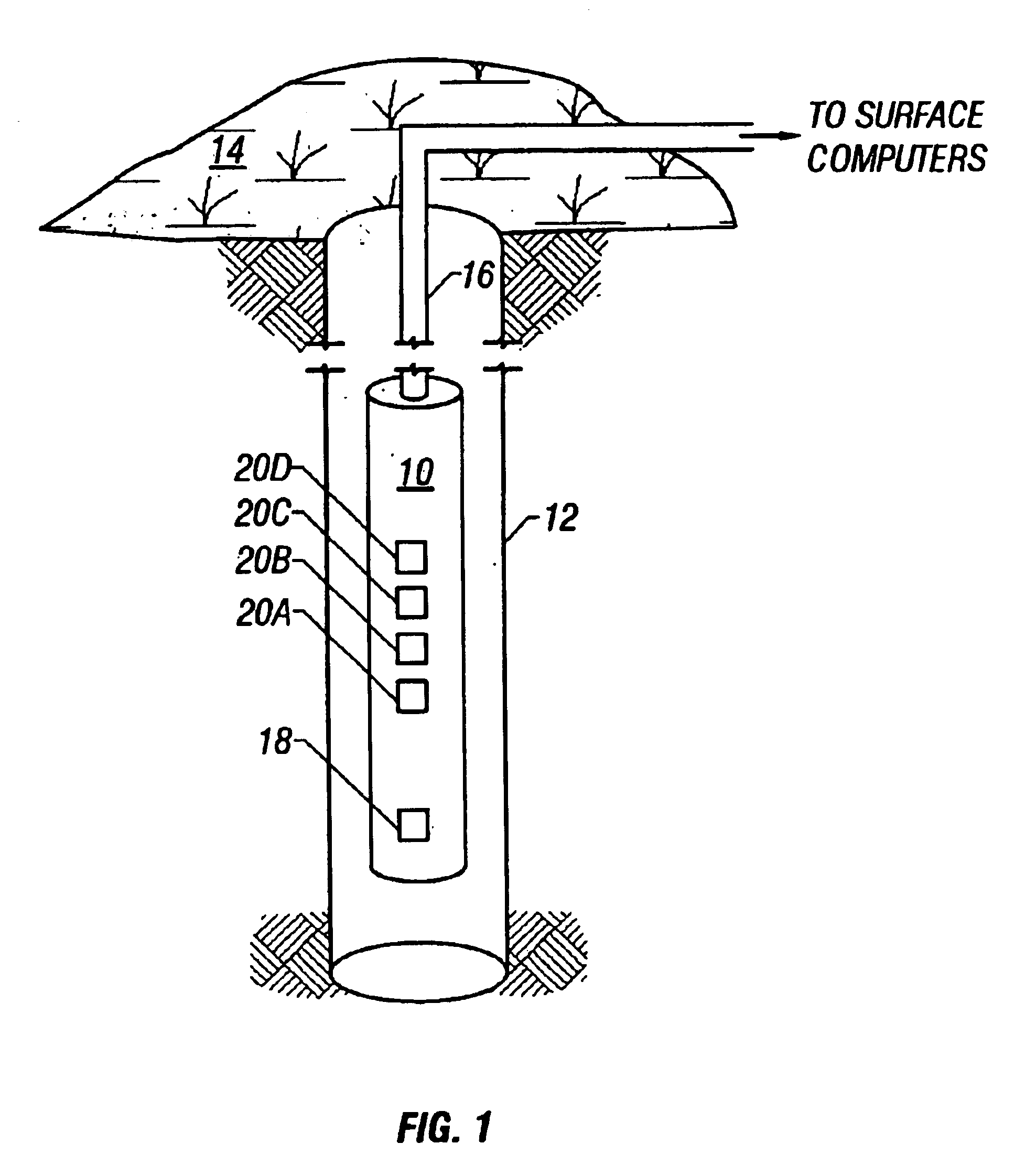Acoustic logging apparatus and method
a technology of acoustic wells and logging apparatus, which is applied in the field of acoustic wells, can solve the problem that the determination of slowness in this matter is not suitable for error estimation
- Summary
- Abstract
- Description
- Claims
- Application Information
AI Technical Summary
Benefits of technology
Problems solved by technology
Method used
Image
Examples
first embodiment
A first embodiment for comparing estimated source signals involves determining a variance of each of the estimated source signals against an average estimated source signal. This embodiment involves calculating an average of the estimated source signals, and then calculating a variance of the individual source signals against the average source signal. The variance values, which are the objective function in this case, may be plotted in such a way that the plot that looks similar to the time slowness plot used in semblance / coherence processing, but has two distinct advantages. First, the variance values have sharper transitions to the inflection points (minima in the preferred embodiments) than the semblance / coherence of the prior art, and therefore a more exact value of the slowness may be determined. Second, both of tie variance values themselves, and the curvature of the objective function at the minima, are indicative of the accuracy of the slowness determination. That is, a par...
second embodiment
The second embodiment for determining the slowness of the formation of the preferred embodiments involves comparing each estimated source signal with its immediate neighbor to determine a difference, and then summing the square of the differences to obtain a value of the objective function. The values of the objective function may likewise be plotted in a time slowness plot to reveal a graph similar to a semblance / coherence plot familiar to one of ordinary skill in the art. The advantage of this second embodiment is that the plotted objective function has slower transitions from maxima to minima such that the determination of the minima points (determining the slowness values) may be accomplished with less computational overhead. In other words, determining inflection points in objective functions created by the differential comparison is at least as computationally fast as traditional semblance / coherence processing. Also, the values of the objective function at the minima and / or th...
PUM
 Login to View More
Login to View More Abstract
Description
Claims
Application Information
 Login to View More
Login to View More - R&D
- Intellectual Property
- Life Sciences
- Materials
- Tech Scout
- Unparalleled Data Quality
- Higher Quality Content
- 60% Fewer Hallucinations
Browse by: Latest US Patents, China's latest patents, Technical Efficacy Thesaurus, Application Domain, Technology Topic, Popular Technical Reports.
© 2025 PatSnap. All rights reserved.Legal|Privacy policy|Modern Slavery Act Transparency Statement|Sitemap|About US| Contact US: help@patsnap.com



